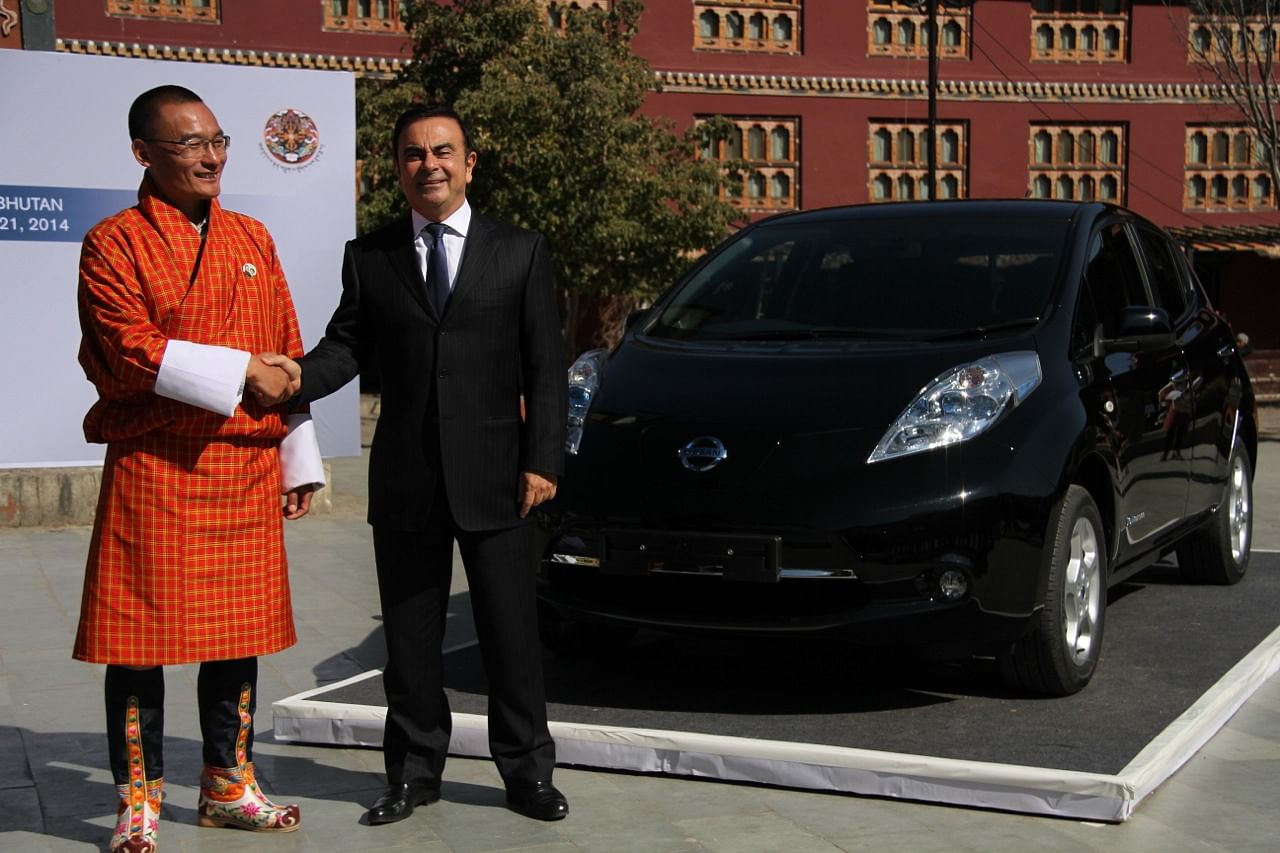Bhutan plans a green paradigm shift
India’s neighbour Bhutan has embarked on an ambitious drive to have an all-electric vehicle parc.
India’s neighbour Bhutan has embarked on an ambitious drive to have an all-electric vehicle parc. Sumantra B Barooah delves into its radical zero emission mobility strategy and queries whether India can take a leaf out of its green book.
At 720,000, Bhutan’s population is less than half of the population of a small Indian state like Goa. But despite its size, the pristine Himalayan kingdom has attracted the world’s attention with some of its policies and actions. Bhutan first drew global attention when it floated the idea that progress be measured not by the popular yardstick of GDP but by Gross National Happiness (GNH).
And now it is making many OEMs, and perhaps countries too, sit up and take notice with its decision to promote emission-free mobility with electric vehicles (EVs). “It is a very forward and strong statement,” says Chetan Maini, founder and CEO, Mahindra Reva. Andy Palmer, chief planning officer and executive vice-president responsible for zero emission vehicle planning and strategy, Nissan Motor Corporation, says “Bhutan has a bold national EV ambition.”
The sale of conventional internal combustion-engined (ICE) vehicles has been banned in the country for the past two years as Bhutan tried to manage its BoP (balance of payments) by reducing imports of vehicles and fossil fuel. But it has provided an incentive to promote cleaner transport alternatives in the form of EVs. In 2012, Bhutan imported fuel worth around Nu. 6.3 billion (Rs 630 crore).

Bhutan initiated action on its environment-friendly vision towards end-2013. “We hope that by 2020 most of the vehicles in Bhutan will be EVs,” says Thinley Namgyel, who is directly involved in the initiative as director of Bhutan’s Gross National Happiness Commission, in an email response to Autocar Professional.
Bhutan has a vehicle population of around 70,000 currently. OEMs like Nissan and Mahindra Reva see strong potential here and made quick moves to launch their products. Nissan made the first move by launching the Leaf on February 21, 2014. It chose the birthday of Bhutan’s king Jigme Khesar Namgyel Wangchuck to make the formal entry ‘as a symbol of the strong partnership between Nissan and Bhutan and their shared vision of the future’.
As a first step in the cooperation, Nissan will deliver Nissan Leafs for use in the government fleet, and as taxis, as well as demonstration units for the national rollout of EVs. Quick chargers will also be supplied to implement the government’s plan for infrastructure covering the entire Himalayan nation. Feasibility studies for further technical cooperation are included in the details of the agreements. Bhutan, on its part, will offer zero custom duty, sales tax and also a carbon credit scheme whereby for every EV sold, the OEM will earn credit that can be traded for tax exemption for imported ICE vehicles.
Nissan's local sales partner, Thunder Motors, is also an R&D firm. It has assembled a prototype that could be later productionised in partnership with the Japanese OEM.

AN OPPORTUNITY AND A LESSON
The Mahindra Reva also entered Bhutan with its e20, on February 27. “We are encouraged that Bhutan is providing this kind of support for making electric vehicles affordable in their country. And I would hope that Bhutan becomes an example for many other nations, including India,” says Dr Pawan Goenka, chairman, Mahindra Reva, and president of Mahindra & Mahindra’s Automotive and FES divisions.
Bhutan has signed MoUs with both Mahindra and Nissan. The details of the level of partnership are currently being discussed. It is also yet to finalise the level of investment that will be allocated for sustainable eco-friendly mobility in the country.

Meanwhile, Bhutan is working on designing various schemes to achieve sustainable and eco-friendly solutions for personal and public transport. Key among the immediate steps are:
Replacing existing ICE government vehicles with EVs.
Replacing taxis with EVs, starting with Thimphu, the capital.
Encourage switching of private/personal ICE vehicles to EVs.
Explore mechanisms for disposing off ICE taxis for every EV taxi put on road.
Development of infrastructure such as quick chargers at appropriate intervals to support adoption of EVs.
Initiating a study to put in place an efficient public transportation system based on EVs, starting with city buses.
It’s a little early to pass a verdict on the efficacy of Bhutan’s strategy to go fully green. “It is often perceived that third world or developing nations can’t take leadership. I think it’s about taking leadership and changing that,” feels Maini. Bhutan now has a chance to prove it.
Also read: Interview with Thinley Namgyel, Director, Gross National Happiness Commission, Bhutan
RELATED ARTICLES
How Indian Startups are Trying to Overcome China’s Rare Earth Squeeze
In the face of Chinese export controls on rare earth minerals, Autocar Professional looks at three startups that are wor...
Luna Systems: Making ARAS Accessible
Dublin-based Luna Systems has developed low-cost rider assistance systems for the world's deadliest motorcycle market, o...
Hyundai: Going Beyond Business
Hyundai Motor India sets an example for manufacturing companies across the country with its extensive and impactful soci...





 05 Apr 2014
05 Apr 2014
 4563 Views
4563 Views





 Shahkar Abidi
Shahkar Abidi



 Kiran Murali
Kiran Murali

